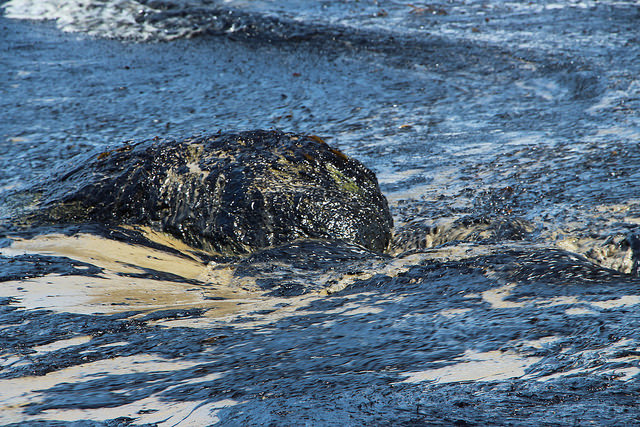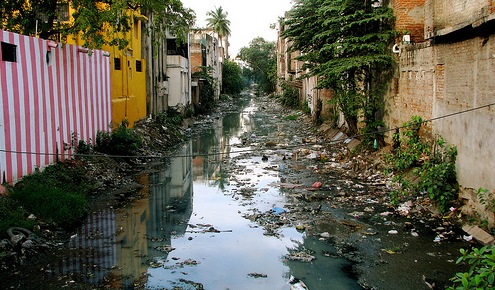Pollution & Health
California Governor Jerry Brown: Environmental Saint or Sinner?
Brown’s National & International Environmental Reputation Disputed by Some California Environmentalists
California Governor Jerry Brown has had a most eventful 2015, especially when it comes to environmental policy. He started the year fresh from an overwhelming election victory last November, earning him an unprecedented fourth term as California’s chief executive. Brown began 2015 by declaring a state drought emergency and becoming California’s “educator-in-chief,” repeatedly warning state …
Continue reading “California Governor Jerry Brown: Environmental Saint or Sinner?”
CONTINUE READINGMichigan v. EPA: Policymaking in the Guise of Statutory Interpretation
In Michigan v. EPA, the majority followed its own policy views, not those in the statute.
The majority opinion by Justice Scalia has gotten most of the attention. Most notably, he wrote that “[o]ne would not say that it is even rational, never mind “appropriate”, to impose billions of dollars in economic costs for a few dollars in health or environmental benefits.” Indeed, “[n]o regulation is ‘appropriate’ if it does significantly …
Continue reading “Michigan v. EPA: Policymaking in the Guise of Statutory Interpretation”
CONTINUE READINGInterpreting Michigan v. EPA
The opinion seems likely to have very limited repercussions.
In bringing the mercury rule to the Supreme Court, industry was hoping for a ruling that EPA had to balance costs and benefits (and could only include benefits relating to mercury). What they got was far less than that. Here, I’d like to address some key questions about the opinion. 1. When does EPA have …
Continue reading “Interpreting Michigan v. EPA”
CONTINUE READINGMercury Rising: The Court Reverses EPA’s Regulation
This was not a great decision for EPA, but it could have been much worse.
The Court has just now decided the Michigan case, involving EPA’s mercury regulation. As Ann Carlson explained in an earlier post, a lot was at stake in the case. The Court ruled 5-4 against EPA. This passage seems to be key to the Court’s reasoning: One would not say that it is even rational, never mind …
Continue reading “Mercury Rising: The Court Reverses EPA’s Regulation”
CONTINUE READINGClean Air versus States Rights
A sleeper decision by the D.C. Circuit upholds federal air pollution authority.
The D.C. Circuit’s decision last week in Mississippi Commission on Environmental Quality v. EPA didn’t get a lot of attention, despite having a very significant constitutional ruling. Since the constitutional discussion doesn’t start until about page seventy, after many pages of scintillating discussion of matters like the reliability of private air pollution monitors and the …
Continue reading “Clean Air versus States Rights”
CONTINUE READINGLegal Responses to the Santa Barbara Refugio Oil Spill
Exploring potential penalties and damages
Last Tuesday, a 24-inch underground oil pipeline on the beautiful Santa Barbara County coastline burst for reasons as of yet unknown. Over the course of several hours, an estimated 101,000 gallons of crude oil spilled down a storm drain, on the shoreline, and into the Pacific Ocean. As of late last week, oil had spread …
Continue reading “Legal Responses to the Santa Barbara Refugio Oil Spill”
CONTINUE READINGClimate Fatigue
You might be tired of climate change. But climate change isn’t tired of you.
I gather that people are tired of hearing about climate change. I’m tired of hearing about climate change, too. Sadly, Nature just doesn’t care that much about entertaining us. It’s going to be climate change this year, climate change next year, climate change the year after that . . . But don’t worry, it won’t …
Continue reading “Climate Fatigue”
CONTINUE READINGLos Angeles Releases First-Ever Urban Sustainability “pLAn”
Envisioning greener energy, cleaner air, and reduced consumption in LA by 2035
Perhaps no metropolis is better positioned than Los Angeles to pioneer ground-breaking environmental initiatives. As the second-largest U.S. city, and with the country’s largest municipally owned utility, a world-class research university–UCLA, and the blessings of abundant sunshine and a temperate Mediterranean climate, Los Angeles could serve as a global model for urban sustainability. Today, the …
Continue reading “Los Angeles Releases First-Ever Urban Sustainability “pLAn””
CONTINUE READINGThe Unreasonable Risk of TSCA Reform
Caught Between a Rock and a Hard Place
The Frank R. Lautenberg Chemical Safety for the 21st Century Act is no doubt generating significant conflict, including claims of undue industry influence, competing bills from prominent members of the same party, consternation among states, and divisions among health and environmental groups. And it may also be the closest we have gotten to TSCA reform—ever. …
Continue reading “The Unreasonable Risk of TSCA Reform”
CONTINUE READINGDo the Poor Undervalue the Environment?
The Emerging Sub-Field of “Envirodevonomics” Seeks to Find Out
It’s hardly news that environmental quality in the Global South is often disastrous. Even middle income countries such as China and India face enormous pollution problems and destruction of ecosystems. But why? Do people in the Global South not care? Or is something else going on? A new paper in the Journal of Economic Literature …
Continue reading “Do the Poor Undervalue the Environment?”
CONTINUE READING











